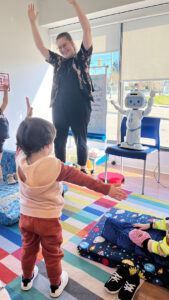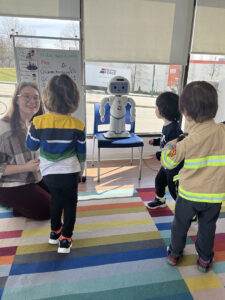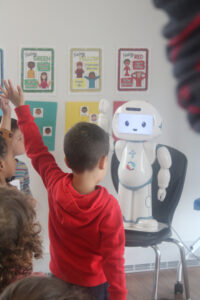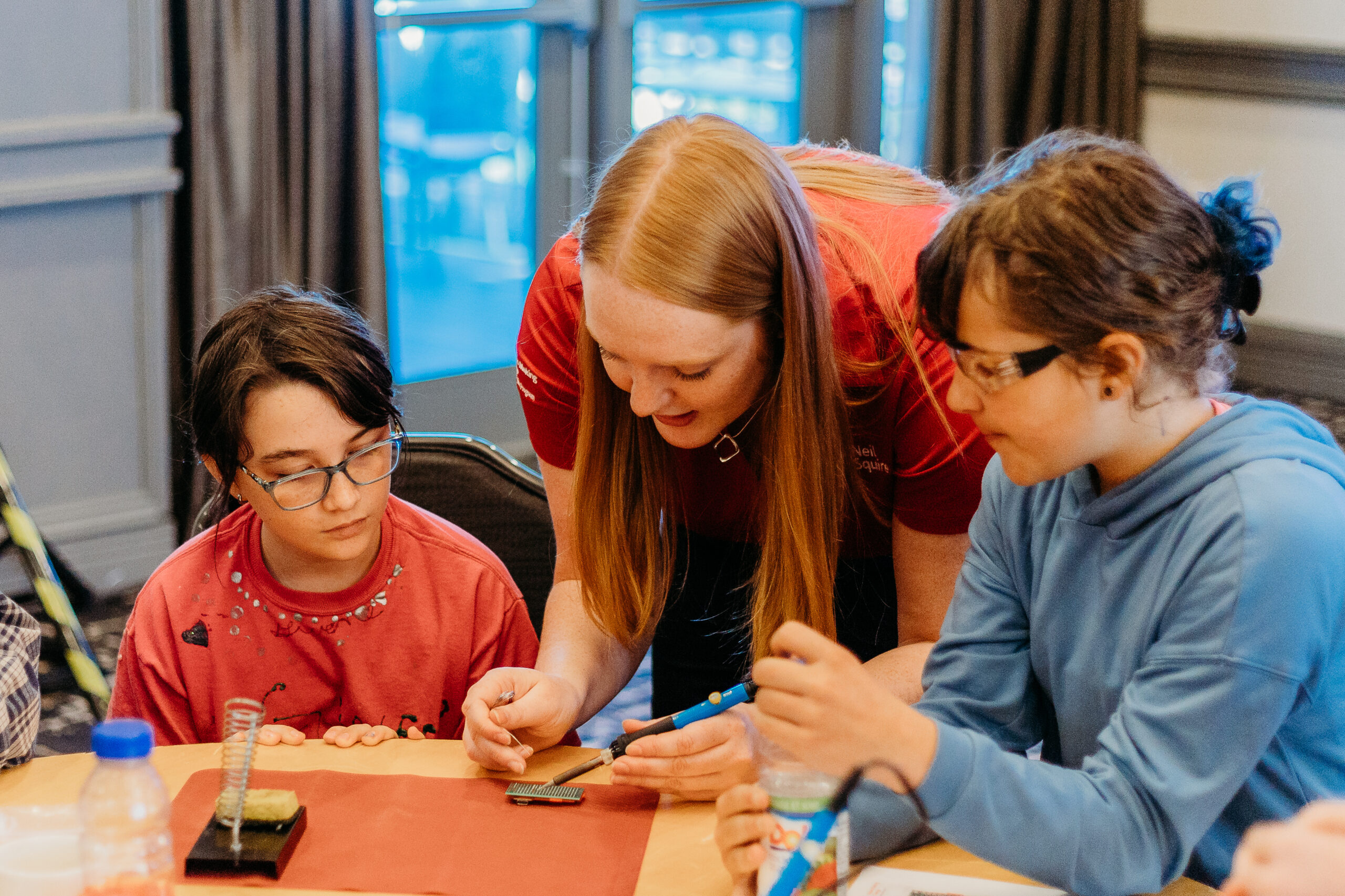By Sharon Aschaiek
As educators in science, technology, engineering, art, and math (STEAM) prepare their students for modern life, research developments in the STEAM domain may impact not only what they teach, but how they teach.
Humanoid robots—assistive technology with human-like characteristics and functions—were found to be a powerful teaching tool in “User Evaluation of Social Robots as a Tool in One-to-One Instructional Settings for Students with Learning Disabilities,” a study conducted at the Learning Disabilities Society (LDS) in Vancouver.
“Overall, we found very encouraging results that [indicate] a robot can make a significant contribution … to the instruction experience, both for students and the instructor,” says Kerstin Dautenhahn, the university’s Canada 150 Research Chair in Intelligent Robotics at the University of Waterloo.
Dautenhahn and her team designed and conducted the field study together with the LDS. Five staff instructors were recruited for the study, as well as 16 children, ages seven through twelve, who receive reading instruction at the society and have been diagnosed with or are suspected of having a learning disability. Half of the youngsters were a control group and participated in standard one-to-one sessions with their instructor. The other half, the intervention group, attended lessons in which the instructor was supported by a social robot.
Made by LuxAI, a Luxembourg-based company that specializes in digital therapeutic products that support neurodevelopmental disorders, the l QTrobot RD-V2 i5, which stands just over half a metre in height, can speak, perform facial expressions, and gesture with its head and hands. The researchers developed a web application that the instructors use to operate the robot, which performs pre-programmed functions in the instructional sessions over three phases.
In the first phase, the robot introduced itself and the session, engaged the student in warm-up activities such as breathing exercises and stretching, and asked them to set a learning goal. In the second, the student worked on their goal and, if they stayed on task, the robot delivered praise as a form of positive reinforcement. If they became distracted, the robot redirected them to stay on task. In the final phase, the robot and the student played a simple game like tic-tac-toe, ending the session with a fun activity.




Photos Courtesy of Learning Disabilities Society
The researchers found that the students in the intervention group completed their learning goals at a higher rate, were more engaged, and displayed fewer off-task behaviours than those in the control group. When the students were asked to reflect on their perception of the robot, they gave generally high marks for friendliness, intelligence, and helpfulness.
As a non-human entity, the social robot “provided an opportunity for the students to express themselves and try new things,” says Dautenhahn in reflecting on its efficacy as a teaching aid.
Meanwhile, instructors’ survey feedback generally conveyed that the robot increased students’ enjoyment, motivation, and engagement, calling it a “fun addition to the classroom” and “effective as a reward system,” as well as “helpful for getting the students to stay on track/focus.”
“In BC, the education system is chronically under-sourced, especially for children who have learning disabilities and who need different supports,” says Rachel Forbes, the executive director of the LDS. “Anything we can do to provide additional support, ideas, and tools to help children who have learning differences is important.”
Dautenhahn says whether public schools adopt social robots as teaching aids for educators depends largely on government investment, and the technology is not cheap: the robot model used in the study costs around $14,000, and there are additional expenses associated with training and maintenance. But she is certain social robots can help alleviate pressures on teachers and support their efficacy in the classroom.
“Teachers know [better than robots] what children’s interests are, what their capabilities are, their strengths and weaknesses. So this is not about replacing professionals, it’s about providing options,” says Dautenhahn. “If you have 30 children in a class, and maybe three or four of them have disabilities, a social robot could help provide those students with some personalized support.”
For those children (and their educators), this kind of personalized support can make a huge difference.





